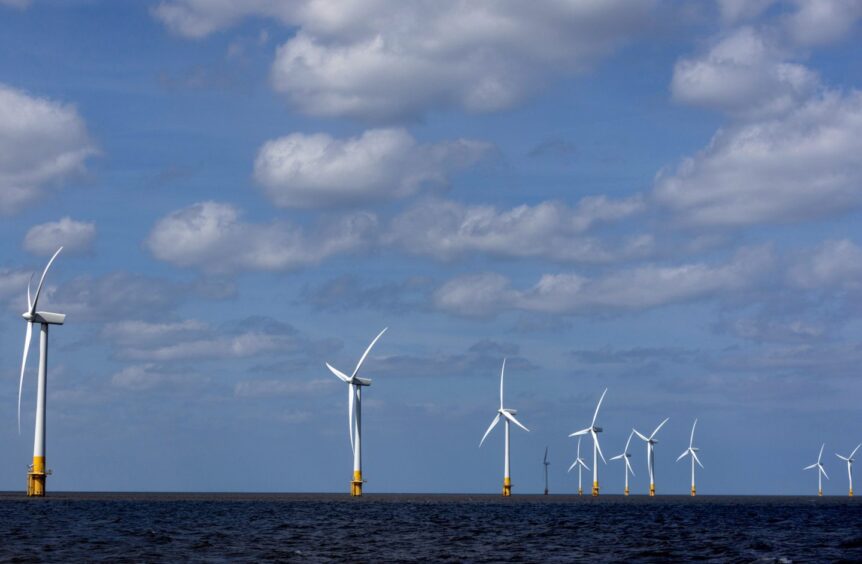
Global investment in the energy transition must double to $3.5 trillion a year to keep global warming below catastrophic levels, according to a new report by analytics and consultancy firm Wood Mackenzie.
“Annual global supply investment would need to reach $3.5 trillion, double where we expect investment levels to be,” said Lindsey Entwistle, the firm’s senior research analyst for the energy transition, during a call on Monday.
Wood Mackenzie’s latest Energy Transition Outlook warns that more investment in electrification and grid infrastructure is needed to avoid climate catastrophe and meet growing energy demand.
According to the firm’s latest report, $78 trillion cumulative investment is required by 2050 in global power supply, grid infrastructure, critical minerals, emerging technologies and upstream processes.
That level of investment is required to limit global warming to 1.5 degrees Celsius in line with UN targets agreed in 2015, which the firm said will only be achievable with a ‘net zero’ pathway. Without any action, the world is on path for 2.5 C to 3 C global warming.
Displacing fossil fuels with renewable energy and low-carbon electricity will see global emissions fall by 35% from 2027, when emissions are expected to peak, through to 2050, according to its base case modelling.
Geopolitical risks such as Russia’s war in Ukraine and conflict in the Middle East could delay global emissions targets by up to five years, the report warns – delays that would put the world on path for the highest anticipated rate of emissions.
Key will be resolving Article 6.4 of the Paris agreement governing carbon markets, reaching agreement for carbon credits and pricing, and forming a global climate bank.
“A string of global shocks has likely put 2030 emissions reduction targets out of reach,” said Prakash Sharma, vice president for head of scenarios and technologies at Wood Mackenzie.
“However, there is still time for the world to reach net zero emissions by 2050 – provided decisive action is taken now.”
Renewables
The share of renewables is forecast to grow to up to 90% of power demand by 2050 – up from 41% today, in the company’s most ambitious scenario.
Wood Mackenzie warns that the energy transition will be coupled with a growth in demand for energy through to 2050, driving a greater need for materials, and an interim use for fossil fuels.
“Any number of challenges – from the supply chain, critical minerals supply, permitting and power grid expansion – could dampen aspirations for renewables capacity,” said Sharma.
Even in a business-as-usual scenario, the share of renewables and low-carbon fuels is expected to grow to 83% in less than three decades.
These technologies are up to five times more metal-intensive than traditional energy resources, therefore demand for lithium, nickel, cobalt and rare earth elements is expected to rise with greater adoption of renewables.
In 2024, about 44% of power demand was met by renewable energy, carbon capture, hydrogen and nuclear. Solar and wind’s share of the global power supply rose to 17% this year, up from 4.5% in 2015, the report said.
By the end of the decade renewables capacity is expected to grow two-fold, with solar predicted to be the biggest contributor, followed by wind, nuclear and hydro, the report said.
However, this still falls short of the global pledge at COP 28 to triple renewables by 2030.
Fossil fuels
Fossil fuels are expected to plateau through to the 2040s and then decline, according to the report, but it said that renewables alone “will not be able to meet future energy needs in most markets”.
Oil and gas are projected to continue playing a role in the global energy system to 2050 due to growth in energy demand, with Wood Mackenzie adding that, “the relentless rise of renewables has implications for gas.”
It warns that the cost of low-carbon hydrogen, carbon capture, small modular reactor nuclear, long-duration energy storage and geothermal remains high, “but the business case is weak without incentives”.
If countries tighten their emissions pledges, the report warns that higher carbon prices and faster cost declines of new technologies “erode the competitiveness of fossil fuels”, while the profitability of alternatives would increase.
The first global stock take under the UN framework concluded in November 2023, requiring countries to raise their ambitions through better pledges at the next round of nationally determined contributions, due in 2025.
The risk is that if countries delay and fail to reach targets for emissions reduction, then they will spend more on climate adaptation.
“Among the implications of a delayed transition are the worsening effects of global warming that will force governments not only to invest in mitigation but spend much more on adaptation,” Sharma said.
Electrification
According to Wood Mackenzie’s analysis, with the growing adoption of renewable energy, electrification of the energy system “is the central plank of the energy transition”.
In its base case, electricity accounts for 35% of final energy demand by 2050, up from 23% today. In a net-zero scenario, electricity comprises 55% of final energy demand.
Energy demand is growing rapidly due to rising incomes, population growth and new demand from data centres and electric vehicles. The world will face a challenge in meeting this growing demand for power, according to Entwistle, who said energy security will come down to “critical infrastructure”.
She said investing in grid infrastructure will be key to enabling electrification and the adoption of renewables, as demand for grid components is expected to increase in line with greater electrification.
Artificial intelligence powered by new data centres is expected to increase electricity consumption from 500 terawatt-hours (TWh) in 2023 to up to 4,500 TWh by 2050, Wood Mackenzie estimates.
“Global final energy demand is projected to grow by up to 14% by 2050,” Wood Mackenzie said. “For emerging economies with rising populations and prosperity, growth is 45%, whereas demand in developed economies peaks in the early 2030s and enters a decline.”
Entwistle said Wood Mackenzie expects annual demand for grid components “to double” by 2025. And by 2040, it expects to “see a shortfall in availability in critical materials” due to demand for electric vehicles, grid infrastructure and data centres.
“Strengthened NDCs and global cooperation will be crucial to mobilise US$3.5 trillion annual investment into low-carbon energy supply and infrastructure, including critical minerals,” said Sharma.

